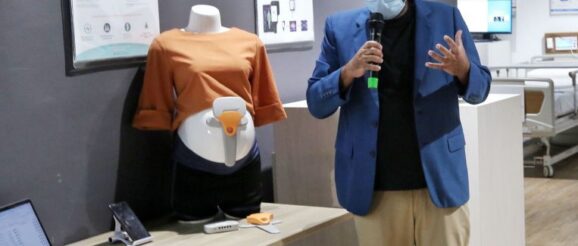Medtech start-ups get help from innovation centre

A remote foetal monitoring programme that aims to detect foetal distress in women with high-risk pregnancies is targeting an overseas launch by the middle of next year.
It was trialled at the National University Hospital’s obstetrics and gynaecology department, and could be deployed there for use if found to be cost-effective.
This is one of the more than 20 medical technology, or medtech, innovations that are being supported by the National University Health System’s Centre for Innovation in Healthcare (NUHS CIH) in their journey to market.
They have attracted more than $100 million in investment from 30 investors so far.
And last week, the centre signed an agreement with Asia Research & Innovation Alliance to set up a $50 million venture capital fund to help local medtech start-ups enter the Asia-Pacific market.
The man behind the two-year-old centre is Professor Lawrence Ho who, as director of NUHS CIH, is eager to help the start-ups create value for their products and then connect them with investors so that the technologies will eventually reach the market.
“There are all these innovations and there’s no point if nothing comes out of it,” he said last week, on the sidelines of a showcase at CIH at Alexandra Hospital (AH).
“We do what we are best at, which is in clinical trials and validation…”
This is a key component of the process of bringing a medtech product to market.
“Healthcare is about patient safety and effectiveness. It’s very tough to do… Adoption is very difficult. If I ask you to adopt something, you won’t. You’ve got to be convinced (of the value),” he said.
The foetal monitor product, which can accurately detect foetal heart rate, uterine contractions and maternal heart rate, is now in the proof-of-value stage, where its cost-effectiveness is being studied, before it can go to market.
Mr Amrish Nair, the 34-year-old chief executive and co-founder of Biorithm, the firm behind it, intends to market the product on a subscription model.
“Previously, such monitoring was only done at the hospitals. With this, now, it can be done at home,” he said.
There are all these innovations and there’s no point if nothing comes out of it… We do what we are best at, which is in clinical trials and validation…
Local start-up Will & Well, which has a range of apparel targeted at post-stroke patients and those with disabilities, is also being helped by NUHS CIH.
These garments make use of magnets that snap into place, and can have front slits designed to assist caregivers, for instance.
The apparel will retail at the AH pharmacy from some time in the first quarter of next year. And its garments redesigned as patient scrubs will be trialled at AH on patients undergoing specialised rehab in the ward next year.
Other innovations that were highlighted last week include a virtual reality trauma-training simulation for emergency room doctors from Singapore-Norway firm Visual Engineering and a surgically implanted tag for real-time monitoring of post-surgical complications, or Wise sutures, by Dr Viveka Kalidasan.
There was also a made-in-Japan autonomous wheelchair that can reduce the portering needs at hospitals.
Prof Ho said he receives pitches from innovators almost every week.
“I would ask them the difficult questions,” he said.
These include what they want to do with their product in five years’ time, he said.
They have to demonstrate that they are in it for the long haul as the medtech journey, while rewarding, can be long and tedious.
